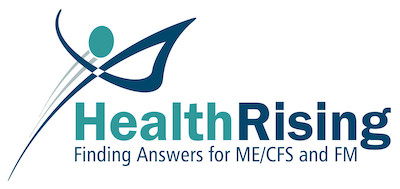



Our goal is to provide people touched by or otherwise interested in chronic pain with knowledge of the latest findings and ideas from this blossoming area of science, so they can spark and contribute to a worldwide conversation about chronic pain and help rally support for research. From Relief

Pain research and treatment is (thankfully) become ever more complex as pain becomes more of a priority in our medical system
The pain treatment and research field is nothing if not diverse field. From using magnetic fields, to blocking the minute ion channels that pain signals travel through, to developing ketamine derivatives, to using heat therapy, to microglial blockers researchers and doctors are trying many different ways to block pain. In fact, the field is so diverse – a real change from not so long ago – it can be a little hard to keep with.
It’s also a fairly young field. An 2011 Institute of Medicine report which found that pain costs the U.S. economy up to a staggering $635 billion a year in medical treatments and economic losses provided a wake up call for the medical establishment. The NIH started, for the first time, to track the funds it spends on chronic pain but funding is still far less than it should be given the societal costs of pain.
Despite this tremendous personal and societal burden of illness, chronic pain is vastly under-recognized by the general public, policymakers, journalists, biomedical research funders, and even healthcare providers.
Once many doctors get past opioid pain relievers they’ve shot their wad. Most doctors receive little instruction in how to treat pain in medical school. It’s this gap between ill-informed doctors and a truly exciting research field that makes patient education so important. That’s how RELIEF can help.
RELIEF provides news summaries, feature articles, interviews, webinars and podcasts covering the latest findings in pain research for a general audience, including people living with chronic pain and others interested in gaining understanding of this area of scientific investigation.
RELIEF’s goal is to spark conversations that result in pain relief being given more of a priority in our medical system.
Our goal is to provide people touched by or otherwise interested in chronic pain with knowledge of the latest findings and ideas from this blossoming area of science, so they can spark and contribute to a worldwide conversation about chronic pain and help rally support for research.
Migraine Relief on the Horizon?

An new way to treat migraines is showing encouraging early results
The RELIEF website has opened with some intriguing blogs. The latest charts thirty years of work that may soon culminate in an entirely new way to treat migraines. Decades ago researchers learned that a neuropeptide called CGRP released by the trigeminal nerves that innervate the face also regulated blood flows to the brain. CGRP blockers appeared to signal a new era of migraine treatments when, at the last minute, liver problems were found in the migraine patients given the drug. Years of work were dashed as a number of large pharmaceutical firms dropped their drugs.
All was not lost, though. Four companies raced to develop new drugs to block CGRP production using antibodies. Many questions remain, but the initial results look good. If they stand up, RELIEF expects a “seismic shift” to occur in migraine treatment in the future.
The Mars/Venus Divide: With Regards to Pain Men May Really Be From Mars

RELIEF reports that the gender divide in humans may extend to pain production as well.
Another blog suggests that women’s pain may be very different than men’s. A sex divide in biology is nothing new; in fact enough evidence has mounted regarding sex differences in pain and other areas that the NIH is finally requiring that all animal studies employ both males and females.
A laboratory study last year suggested that the microglia play a huge role in pain sensitivity in men but not in women. It women’s vastly more complicated immune systems, immune cells called T-cells may be doing the job in women. If that’s true then expect more immune modulating drugs – and better relief over time – women in pain.
A Small Gene Change Paves the Way for a New Drug
Another blog reported how a genetic variation found in about 15% of people allowed them to recover from back surgery without suffering from chronic pain. Distinguishing that genetic variation enabled them to distinguish a key molecule in pain production. A drug company is now working a drug to block the production of that molecule.
More blogs report on using cannabis and complementary therapies to reduce pain, the role the brain plays in producing pain and more.
I’m going to be following RELIEF closely.
You can get the latest blogs from Relief by signing up for their “content alerts” using the second form from the top on this page. You can also sign up for their newsletter.






Is “RELIEF” a website? Do you think you could provide a link?
http://relief.news/home/
For Steve and Nancy
Click on “contents alert” in the last paragraph of Cort’s article it will take you to the RELIEF website. Click on the menu to navigate.
Yes – I’ll go in search via Google, but a link would be terribly helpful.
There is a link at the end of this sentence “on this page”- unfortunately the link does not have a different color than the rest of the text. We will fix that.
You can get the latest blogs from Relief by signing up for their “content alerts” using the second form from the top on this page.
Actually there were links all over the page but you couldn’t see them. That was due to the theme we were using but the links are now visible. Sorry about the trouble!
Here is the website:
http://relief.news/home/
Thanks Vlynx!
“SPONSORS
RELIEF was designed, developed and launched with a pilot grant from the Rita Allen Foundation, with additional grant support from Pfizer and Purdue Pharma L.P.”
How do I get a message out on this site ? Im dealing with insomnia and nothing helps. I cannot take narcotics. Any help ?
They don’t allow comments yet but are considering it.
Thanks for this article about the Relief site, Cort. I like that it has interviews with and articles by a variety of experts/specialists/knowledgable people from wide-ranging areas. That helps give a broad view of knowledge about and approaches to pain and pain relief. Of course, big Pharma is involved in some funding of the site, but that’s unavoidable since the development of new, more effective pharmaceuticals will have to come from them.
Good point!